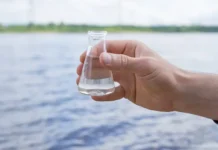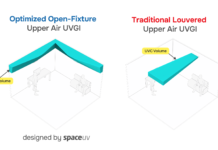By Amy Hedrick, CEO, Cleanbox Technology
Corporate sustainability is no longer just a buzzword; it’s now a key part of modern business strategy. Companies across various industries are realizing that sustainable practices aren’t just good for the planet – they’re also great for long-term profitability. By incorporating environmental, social and governance (ESG) criteria into their core operations, businesses can boost their reputations, spark innovation and stay on top of regulations.
Corporations are compelled to address sustainability regardless of their industry.
This shift toward sustainability mirrors a broader trend in which stakeholders – investors, consumers and employees alike – are calling for more accountability and transparency. In today’s world, corporate sustainability is becoming synonymous with corporate responsibility and success. When founders, investors, tech executives, scientists and VCs come together to take accountability for building solutions toward a safer, healthier world for future generations, it becomes clear that sustainable business is good business.
Safety in the workforce is critical for employee health and business stability, regardless of industry.
Proper safety, cleaning and hygiene standards exist in shared environments for a reason, and the world – like it or not – is globally connected. A contagion in an area “across the world” easily can be carried on a plane in record time, as the world has experienced. A higher level of care should be the new standard in a world where infection spread quickly can impact every kind of business and alter people’s everyday lives. The bottom line is that the value of cleaning and safety standards around infection prevention has been amplified, and businesses require more effective and sustainable solutions.
Consider that 80% of the things that make us sick come from touching contaminated surfaces and then touching our faces. 7,8 After much public education on the benefits of handwashing, the observed number of people who wash their hands after using the bathroom is between 63 and 75% in first-world countries, with an only an aggregate 19% of people globally. This number drops down to 7 to 14% when measuring handwashing after sneezing or coughing. 9, 10, 11 The impact? According to the Department of Labor, communicable illness keeps more than 4 million workers in the US home sick every day. The bottom line is that hygiene matters for global health and wellness, and the adoption of sustainable hygiene practices in corporate and enterprise environments has an important role in the future health of our planet and the health and wellbeing of our workforce.
Safe business environments are creating corporate waste problems.
While sustainability and climate impact have been concerning issues for decades, it’s clear that the biggest climate impacts come from corporate entities, not just average people. Corporations, from hospitals to schools, contribute tons of waste through plastics, metals, chemicals, single-use disposables and other materials.
The global corporate cleaning and services industry is a $375 billion market, relying heavily on chemicals and single-use disposables. Within this market, the global disinfectant spray and wipes segment alone is expected to reach $12.38 billion by 2031. The global need for effective disinfection and decontamination, driven by the needs of a world reliant on a global economy, has increased reliance on these methods, and at the same time, has a significant impact on air and water quality, with chemicals and disposables infiltrating our food sources.
The big problem of landfills: Single-use disposables will impact soil, air and water pollution for decades to come.
The hygiene and disinfection markets are key to any corporate sustainability play, specifically because hygiene efforts generally require a combination of multiple types of chemicals and single-use or other disposables.
Plastics, chemicals and single-use decontamination, sanitization and other hygiene products used by companies create over 500,000 tons of waste and cost businesses billions of dollars each year. For example, the UK alone disposes of more than 11 billion wet wipes each year (including personal hygiene wipes), clogging up waterways and sewage systems.6 Since some of these fibers take months to years to degrade, the materials – in addition to the chemicals and contagions – quickly can penetrate our living environments, ultimately ending up in water and food sources. Discarded wipes and masks in the environment will become fiber microplastics over time. Waste management and end-of-life disposal cycle are both challenges that don’t have an effective resolution.
As another example, the average dental practice in the United States uses 400 single-use wipes per week per surgery. A four-chair practice will use approximately 75,000 wipes per year. Adopting a more sustainable alternative will mean a small but significant contribution to a more sustainable dental industry. 2 Most of these wipes are composed of material that includes plastic. Even “biodegradable” wipes can take years to decompose and also require very specific conditions (soil, temperature) to do so.
“Within dentistry, disposable wipes may be the single most significant contributor to resource use, with a single wipe contributing 124 g of carbon equivalent emissions, equivalent to a car driving for one kilometer.” 1
As noted in an NIH report, “Wipes and masks are made of a large number of plastic fibers, which are easily broken and fragmented into microplastic fibers under the influence of environmental factors. Weathered wipes or masks can release billions of microplastic fibers…Microplastic fiber pollution is a huge environmental issue…it is urgent to recognize this potential environmental threat and prevent it from becoming the next microplastic problem.” 3
In another business scenario, training environments that utilize shared devices (such as virtual-reality [VR] headsets in classrooms) will consume hundreds of thousands of wipes per environment. For example, a classroom with 24 headsets used three times per day will consume more than 200,000 wipes over four years. This is based on a conservative average of using three wipes per VR headset per clean to minimally ensure wet contact time of the chemical on all the areas of the headset that make contact with the face and head. Consider that this same classroom, despite severe budget constraints on school systems, will need to spend $82,000 to clean these 24 VR headsets over four years. The impact of disposables is not just a matter of sustainability; it has a direct impact on budgets.
The existence of ‘forever chemicals’ from use of chemicals in the workplace and at home is of grave concern to the food industry and sustainable health of global populations.
Overuse/misuse of chemicals are concerns for industry experts due to unhealthy levels of chemicals in the air, exposed to our skin and our bodies, and the resistance build-up against these overused or misused chemicals. Concentrated chemicals used from bleach, ammonia, chlorine and isopropyl alcohol have been known to cause skin and other allergic reactions, as well as eye and nose irritation, in addition to allergic reactions. Reactions to these chemicals include nausea, vomiting, headaches, dizziness, drowsiness, weakness, fatigue, narcosis, skin or eye irritation, and other allergic reactions.
“Between 2009 and 2015 the Respiratory Health Division, National Institute for Occupational Safety and Health, West Virginia studied exposure to disinfectants in 73,262 health care workers and concluded occupational exposure to cleaning products and disinfectants was significantly associated with a 25% to 38% increased risk of developing (COPD) chronic obstructive pulmonary disease independent of asthma and smoking.” 2
There must be a comprehensive approach to effective safety standards that minimize human risk and reduce negative impact on our life sources.
UV is an underrecognized form of disinfection that can be used safely and is positioned to augment the disinfection market.
UV disinfection is a powerful solution to this problem. UV disinfection technology, which utilizes ultraviolet light to kill or inactivate microorganisms, offers an effective and sustainable alternative to traditional chemical-based methods. By reducing reliance on harmful chemicals and single-use products, UV disinfection enables corporations to significantly lower their environmental footprint. This technology not only minimizes waste but also mitigates the pollution of air and water resources, directly supporting corporate sustainability mandates and contributing to a healthier planet.
While the disinfectant properties of ultraviolet light (UV radiation) have been well documented for more than a century, the practical end use of UV-based products is relatively new outside specific industries. The ability to use specifically designed point-of-use products for various types of hygiene needs is a market ripe for massive adoption. The science itself is established, and market capture has grown, primarily in water-decontamination applications. Various wavelengths and applications of UV also are used for air and surface disinfection. The UV industry is primed for expansion in a world that is realizing that overuse of chemicals and other disposables is not sustainable long-term.
Why UV?
UV is a more sustainable way of broad and easily accessible disinfection. Depending on the form factor and use application, UV doesn’t require ozone, heat or other chemicals to be effective. UV has a low energy consumption, minimal environmental impact and is highly efficient while remaining effective. Even when combined with chemicals, such as ozone, the ability to mitigate environmental impact is exponentially higher than current chemical options.
UV is a proven effective method of disinfection, decontamination and sterilization. Using UV light strategically as a disinfectant should be the wave of the future. However, it must be applied correctly, and the method will vary depending on the form factor in which the light is delivered, and the intended use case and disinfection needed. Proper application and management of UV technology are crucial for maximizing its benefits and ensuring safety and effectiveness in various settings.
Taking sustainability a step further with UV-C LEDs
Traditionally, UV (A, B, C) primarily has been utilized in a bulb form factor. More recently, technology has advanced to implementation in LEDs, offering considerably more advantages over traditional methods, depending on the intended application. Some of the biggest value propositions of UV LEDs are their ability to be switched on instantly, with no warmup required and no cycling limitation. They also have lower heat consumption, higher durability and the ability to integrate into flexible designs for point-of-use products. In most designs, UV-C LEDs can last the full lifetime of the product, eliminating the need for regular lamp replacements. UV-C LEDs support the objective of the Minamata Convention for “protecting human health and the environment from anthropogenic emissions and releases of mercury and mercury compounds.” 13 These advancements make UV LED technology a versatile and efficient solution for modern disinfection needs.
Types of Products Using UV-C LED
The ability to use UV for disinfection has been established for water purification, surface disinfection and air decontamination. Water reactors using UV-C LEDs help reduce single-use plastic containers in point-of-use (POU) water vending systems.

Excerpt on Energy Savings Using LEDS
An excerpt from an article published September 2023 in LEDs Magazine 14 shows calculations for annual power consumption savings in a point-of-use water system:
The impact on total cost of ownership is a common benefit for consumer POU as LEDs are operated only while disinfecting. Systems using mercury lamps will operate with an idle mode or lamp cycling to reduce the impact of lamp warm-up time on the user.
A system using an 11-watt lamp may consume only 5.5 watts while in idle mode, operating at full power 10% of the time, while in idle mode the other 90% of the time. At this rate, the system would draw a little over 53 kWhr per year from the home. According to the Department of Labor, the average electricity kWh in the US is 0.165 as of May 2023, making the operating cost just under $9 for a typical year.
If we consider the same system performance with an LED-based design, we can evaluate the annual energy cost for a few different LEDs with varied WPEs. Using the same assumption around operating time – 10% on / 90% idle, we assume that when an LED-based system is at idle there is no power draw from the light source.
Switching from a lamp-based system to the UV-C LED system saves the homeowner anywhere from 30% to 70% depending on the UV-C LED. However, an improvement from 5% to 6% wall plug efficiency is less than a dollar in annual savings. While the switch from lamp to LED is compelling when paired with the other sustainability advantages—the impact WPE of a discrete LED has on the end consumer is negligible. Particularly at the current range of WPE across commercially available UV-C LEDs. For the lower flow POE market in the 5 – 12 gallon-per-minute range, a 5% wall plug efficiency seems to be the threshold for broad market adoption.
Businesses can make better choices for a healthier and safer future.
As corporations worldwide embrace more sustainable practices, the impact of shifting from chemical to UV disinfection methods can be an important positive contributor. A major corporation that decides to invest in UV-based disinfection systems to offset or eliminate the dependence on disposable or chemical solutions will see a measurable impact on many fronts, including sustainability, health and safety, productivity and bottom line. It will reduce waste, improve air quality and reduce exposure to toxins. The impact on human health and safety will be positive, as UV is a more effective, consistent and repeatable disinfection practice than traditional chemicals. And companies will find that investing in high-quality, long-lasting UV solutions one time will deliver very strong return on investment (ROI) by reducing the cost associated with disposables and chemicals. When companies make top-level changes to their business practices, the results can be exponentially beneficial.
Amy Hedrick is the chief executive officer and founder of Cleanbox Technology, a pioneering sustainable disinfection company built to solve real-world problems through innovative solutions. Because of her vision for building global brand awareness, Hedrick’s leadership has expanded Cleanbox Technology’s reach around the world, establishing the brand as a leader in its field. Hedrick has been in both the immersive tech and UV product development spaces for close to a decade, supporting innovation in UV-C applications and speaking frequently on UV-C for surface decontamination with work published in this space. Hedrick actively contributes to AAMA, ASTM, IVRHA, XRA and IUVA. She serves on the Editorial Board of UV Solutions. For more information, visit www.cleanboxtech.com or https://www.linkedin.com/in/amymhedrick/.
Special thanks to Crystal IS for confirming data points around LEDs for this article
References
- https://www.sciencedirect.com/science/article/abs/pii/S0195670122002821
- https://dentistry.co.uk/2023/12/14/single-use-wipe-ban-planned-for-2024-what-does-this-mean-for-dentistry/
- https://www.ncbi.nlm.nih.gov/pmc/articles/PMC8578912/
- https://www.fortunebusinessinsights.com/cleaning-services-market-107295
- https://straitsresearch.com/report/disinfectant-sprays-and-wipes-market#:~:text=Market%20Overview,period%20(2023%E2%80%932031)
- https://www.awe.international/article/1869795/wet-wipe-ban-will-target-11-billion-sold-year-uk
- Chrome-extension://efaidnbmnnnibpcajpcglclefindmkaj/https://www.ihaconnect.org/Resources/Public/Patient%20Safety/2020%20Patient%20Safety%20Awareness%20Week%20Toolkit/Table%20Tents/Soap%20Up.pdf
- https://www.ucihealth.org/blog/2018/12/cold-flu-prevention
- https://pubmed.ncbi.nlm.nih.gov/17577074/
- https://health.clevelandclinic.org/why-you-really-should-wash-your-hands-after-using-the-bathroom-every-single-time
- https://today.yougov.com/topics/politics/survey-results/daily/2020/01/20/2b55b/1?_gl=1*t4jqfz*_up*MQ..*_ga*MjAxNTU3NjUyMi4xNzE1OTkyNDI1*_ga_X9VN3LD3NE*MTcxNTk5MjQyMy4xLjAuMTcxNTk5MjQyMy4wLjAuMA
- https://www.news-medical.net/life-sciences/Using-UV-for-Sterilization.aspx
- https://mercuryconvention.org/sites/default/files/documents/2021-07/Minamata%20Convention%20on%20Mercury%20at%20a%20glance_COP1%202017_EN.pdf
- https://www.ledsmagazine.com/lighting-health-wellbeing/article/14297210/guv-systems-rethinking-wall-plug-efficiency-for-uv-c-leds-in-water-disinfection






